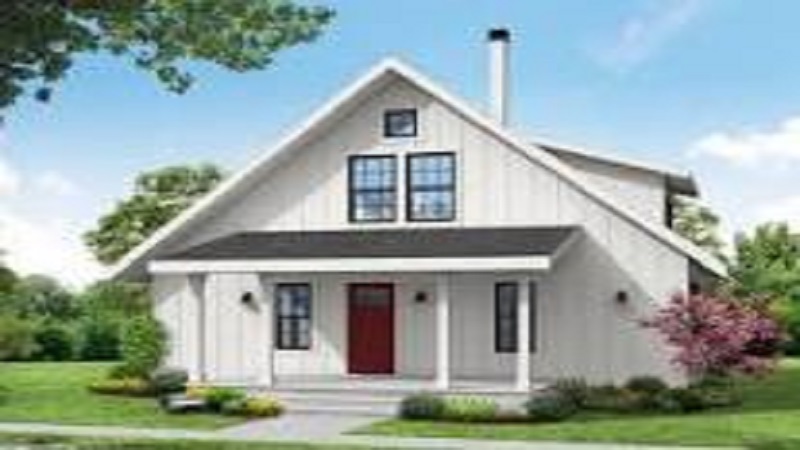Natural Low Budget Simple House Design, low budget, and simple is not only possible but can also result in a beautiful and functional living space. This article will explore the key aspects of creating such a home, covering everything from selecting the right materials to incorporating sustainable practices.
1. Introduction to Natural Low Budget Simple House Design
Designing a house on a budget does not mean sacrificing aesthetics or comfort. With thoughtful planning and a focus on natural elements, you can create a home that is both beautiful and economical. This section will introduce the core principles behind natural low budget simple house design.
2. Planning and Budgeting
2.1 Setting a Realistic Budget
The first step in any low budget house design is to establish a clear and realistic budget. This includes considering all potential costs, such as land, materials, labor, permits, and unexpected expenses. A detailed budget helps to avoid overspending and ensures the project stays on track.
2.2 Designing with Cost Efficiency in Mind
Design choices significantly impact the overall cost of a house. Opting for a smaller, more efficient layout can save money on materials and labor. Multi-functional spaces and open floor plans can maximize the use of available space, reducing the need for additional rooms and materials.
3. Choosing Natural and Affordable Materials
3.1 Sustainable Building Materials
Selecting sustainable and locally sourced materials can lower costs and reduce the environmental impact of your home. Materials such as reclaimed wood, bamboo, and recycled metal are excellent choices for a natural and budget-friendly design.
3.2 Earth-Based Materials
Earth-based materials like adobe, cob, and rammed earth are not only affordable but also provide excellent insulation and thermal mass. These materials can be sourced locally and often require minimal processing, further reducing costs.
4. Simplified Construction Techniques
4.1 DIY and Community Involvement
Incorporating DIY elements and involving the community can significantly reduce labor costs. Many aspects of house construction, such as painting, landscaping, and even some structural work, can be done with the help of friends, family, or local volunteers.
4.2 Prefabricated and Modular Homes
Prefabricated and modular homes offer a cost-effective alternative to traditional construction methods. These homes are built in a factory setting and then assembled on-site, reducing labor costs and construction time.
5. Energy Efficiency and Sustainability
5.1 Passive Solar Design
Passive solar design utilizes the sun’s energy to heat and cool your home naturally. This involves strategic placement of windows, insulation, and thermal mass to maximize energy efficiency and reduce utility bills.
5.2 Renewable Energy Sources
Incorporating renewable energy sources like solar panels and wind turbines can further reduce your home’s environmental impact and lower long-term energy costs. Many renewable energy systems are now more affordable and accessible than ever before.
6. Interior Design on a Budget
6.1 Minimalist Aesthetic
A minimalist approach to interior design can create a clean, uncluttered look while keeping costs down. Focus on essential furniture and decor items, and choose pieces that serve multiple purposes.
6.2 Upcycling and Repurposing
Upcycling and repurposing old furniture and materials is a great way to save money and add character to your home. Thrift stores, garage sales, and online marketplaces are excellent sources for affordable, unique items.
7. Landscaping and Outdoor Spaces
7.1 Native Plants and Xeriscaping
Using native plants and xeriscaping techniques can create a beautiful, low-maintenance landscape. Native plants are well-suited to the local climate and require less water and care, reducing gardening costs and effort.
7.2 Outdoor Living Areas
Creating outdoor living areas can expand your usable space without the cost of adding additional rooms. Patios, decks, and garden spaces can be designed inexpensively using natural materials and DIY techniques.
8. Case Studies and Examples
8.1 Real-Life Low Budget Natural Homes
Examining real-life examples of low budget natural homes can provide inspiration and practical insights. This section will showcase several homes that successfully combine affordability, simplicity, and natural design elements.
8.2 Lessons Learned
Learning from the experiences of others can help you avoid common pitfalls and make informed decisions. This section will highlight key lessons from the featured case studies, offering valuable tips for your own project.
9. Conclusion
Designing a natural low budget simple house design is a rewarding endeavor that can result in a beautiful, sustainable home. By focusing on cost-efficient design, sustainable materials, and energy efficiency, you can create a space that is both affordable and environmentally friendly. With careful planning and a bit of creativity, your dream of an economical and natural home can become a reality.
